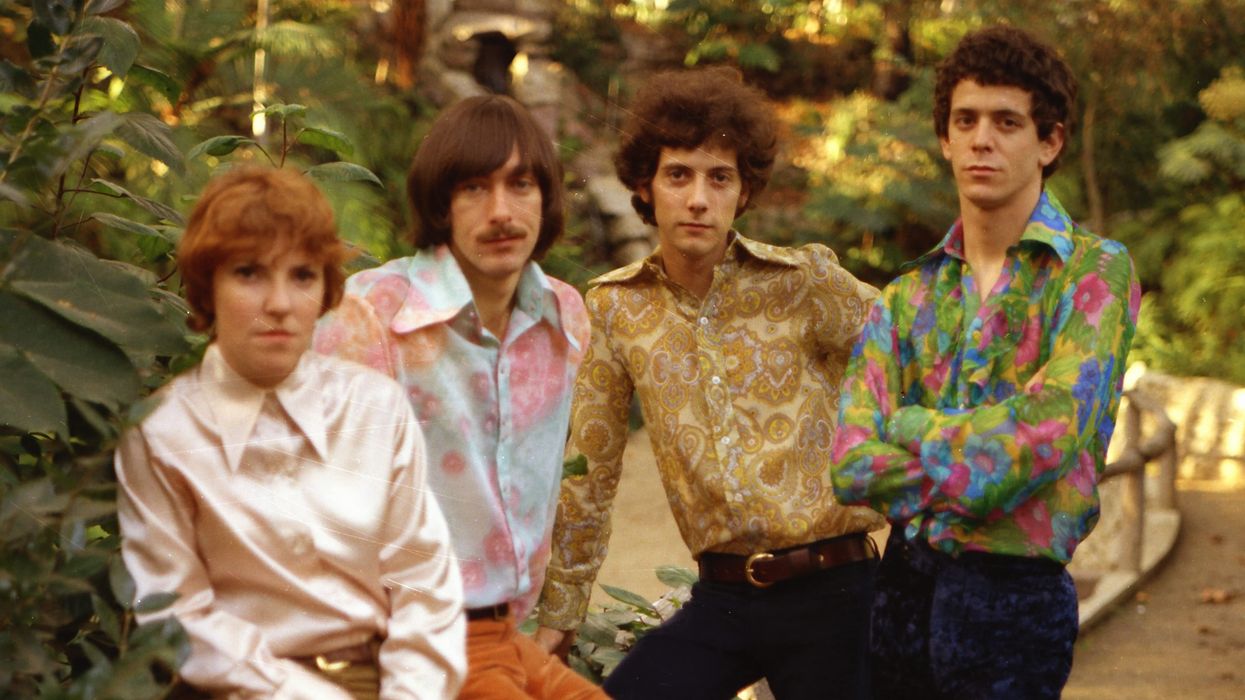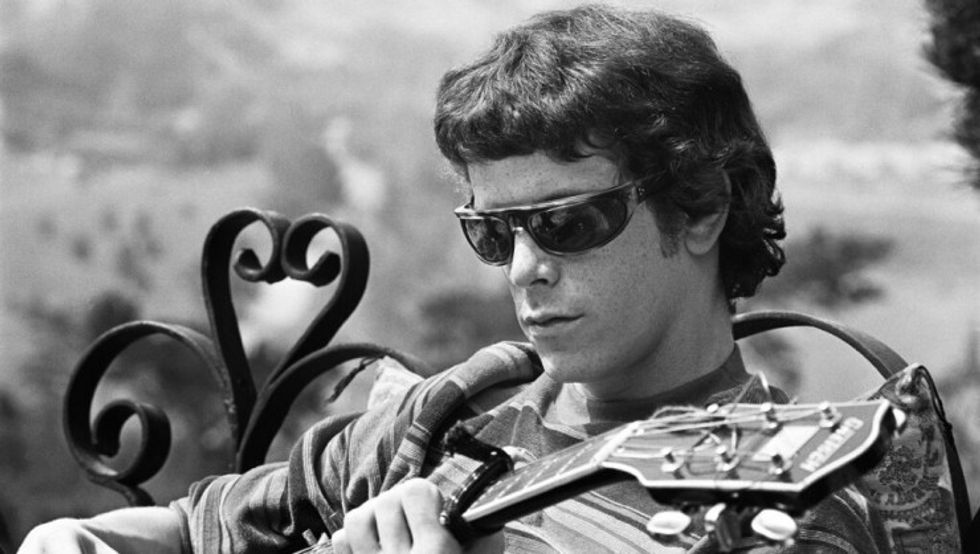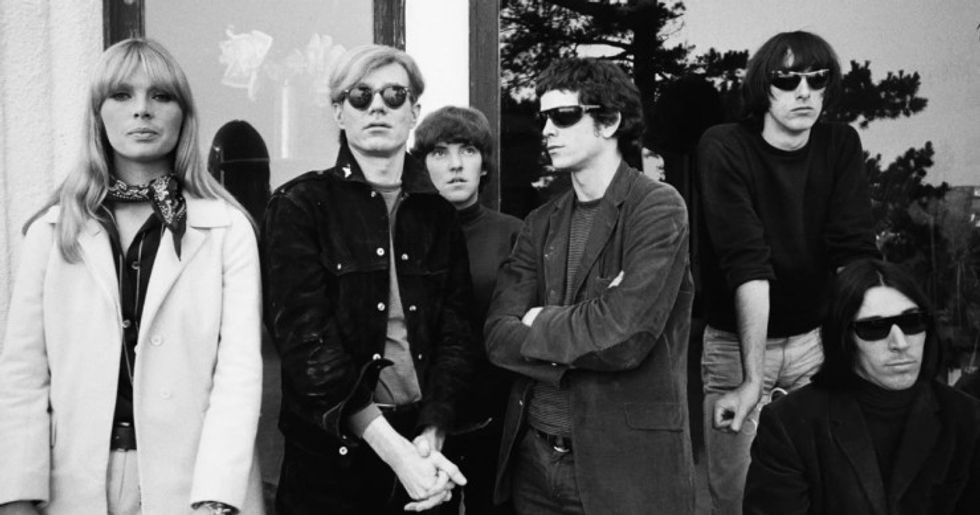We Speak with Todd Haynes about 'The Velvet Underground'
Check out our interview with director Todd Haynes!

When you're young your tastes can become, at times, almost rigid. You will brook no criticism of that book, film, album, band, burrito, tree, or shoe that you have formed a bond with; anything short of total allegiance and worship could be grounds for permanent dismissal.
This was the nature of my love and respect for the Velvet Underground when I was a teen. When you listened to them, you became the songs and the words. You could feel them, physically. Because my feelings haven’t changed, I was overjoyed to watch Todd Haynes’ new documentary about the band, The Velvet Underground, which is a sincere, direct, knowledgeable exploration of work by artists he loves.
Many of the shots of the musicians themselves are hypnotically straightforward, just faces, staring at you, saying nothing; mixed with this approach is dizzying artistic footage, the cultural meat of their times, from Warhol, Brakhage, Anger, Mekas, and from the actual air in the streets—you can almost smell it, this is such an immersive experience.
And then, of course, there's the transporting, intellectually disheveling music. I'm obviously biased, perhaps even this film's ideal viewer, but I think it would withstand any test you might put to it. (As if.)
Haynes was exceedingly generous with his energy and his intelligence when No Film School talked to him recently about how it all happened, then and now.
No Film School: How did you first encounter the Velvet Underground, and what is their importance for you either as an artist, or as a person, or both?
Todd Haynes: I didn't hear The Velvet Underground really until college. I was very into Bowie and Roxy Music, and punk rock, and Patti Smith, and all that. So, the music that I heard from the Velvets and the history that it revealed was exposing the root—is that the term in The China Syndrome?—exposing the core, that's what it is, of all the music that followed them.
It was music that spoke to me, and I think a lot of people feel, when they discover the band, like they’ve discovered something very unique that only they could find. My reaction to the Velvets' music was a real creative opening. Even though I'm not a musician, it sort of made me feel like I could do anything I wanted. You could be a musician if you didn't have virtuosity, you could make a painting, or a film. I think it's a unique thing for music to make you feel invited into the process.
NFS: How did you decide to make a straight documentary as opposed to a fictionalized history?
Haynes: I wasn't interested in making a straight documentary. I was interested in making a gay documentary! I was interested in making an avant-garde documentary, using the culture and the language of the art scene surrounding this band, as the way to tell the story. That was largely because there's very little traditional footage of them. So, their images resided almost exclusively in avant-garde cinema, mostly exclusively that of Andy Warhol. That was both a limitation and a creative opportunity, because it meant that all of these amazing filmmakers and their films were relevant to this story but also insanely beautiful and really diverse. That became the bloodstream of the film.
NFS: How did you organize the footage when you were going through it?
Haynes: Brian O'Keefe, my partner, who's a researcher and real lover of film and music, started with the broadest list of titles, year by year, during these key years, of the films and the filmmakers. We all partnered with Motto Pictures, who produce documentary films. Carolyn, Julie, and Chris from Motto, and Christine, my producer, and Brian, and I all went to Pittsburgh to the Warhol Museum. They introduced me to a lot of footage of Warhol films that I had not seen before.
So then we got temp versions of countless hours and hours of the films, and then Adam Kurnitz, one of my two film editors, basically put it into our editing system and arranged it not by name of artist or year, but by topic, or category, or title, or location: Velvets, films with the Velvets, New York City, trains. So when we were looking for something of a certain emotional tenor, we would just scroll through these images, knowing they were all relevant.
NFS: Well, sort of to that point, the film has a very poetic quality. You're obviously moving chronologically through all this information, but the actual images you're seeing on screen are often more surreal. I'm wondering how you got that quality, exactly?
Haynes: It was really case by case, as you would imagine. Clearly Warhol films were at the center. But when we're literally talking about the influence of La Monte Young's drone music, where John Cale was coming from with Tony Conrad, and The Dream Syndicate work that he was doing with La Monte, we learned that Jonas Mekas had taken Andy Warhol to a La Monte performance. This was right when Andy Warhol started to play with long-duration films at the beginning of his film career, so that directed us very literally to playing the La Monte music against images from Sleep and Kiss and Empire.
We would also look for films that conveyed the tenor and the energy of the music that we were featuring. So, when the stuff from the second record was very speedy, sort of driven and fast-paced, we looked for layered images. When it was “Pale Blue Eyes,” we went for the beautifully slow, hypnotic Stan Brakhage images.
NFS: Frank Zappa, who I know had mixed feelings about the band, and they about him—I wouldn't say antagonisms, but—
Haynes: I think it was antagonism, antagonism from Lou Reed toward Zappa. I don't know if it was antagonism from Zappa toward them. I think it was the style of the Velvets to express antagonisms.
NFS: Zappa said that their first album was electronic folk music, because it was built out of the elements of their environment. I'm wondering if you could speak to that.
Haynes: I think that's an interesting way of putting it. With electronic folk music, one thinks of “Highway 61” and “Like a Rolling Stone.” I don't think that's what the first Velvets record sounds like, because the lyrical content is not quite as upfront and leading your experience as it was with Dylan. Instead, it's really this blend of sounds which I think some people have described as art rock.
Really, it's hard to think of any band that one could call art rock before the Velvets. It's not just because they came so directly out of the art scene, but there's something in the strange combinations of the avant-garde elements from Cale, and the drones, with the tribal drumming sounds of Maureen Tucker, and the fairly lyrical guitar of Sterling Morrison, and the rhythm guitar of Lou Reed, and his voice and his attitude. And, of course, the content of the music puts it in this more transgressive territory, being both about how we feel about ourselves as people, and men, and how troubling it can be to live in the world.
NFS: I'm also interested in the economic side of this, the sociological side. The film mentions that there were, at a certain point, at the height of the band's popularity, a lot of people from different walks of life, very wealthy people, in fact, coming to these shows. What did you find out about that?
Haynes: Well, the entire ethos of the sixties, particularly in New York and particularly at The Factory, was a collapsing of high and low cultures. You saw rich kids from Harvard and people right off the streets of Manhattan, junkies, transvestites, bikers, biker boys, or whoever, all together. The collapsing of categories was also played out in the categories of art, so that people wanted to break down the differences between one medium and the next.
NFS: What kind of message would you think this film would send to present-day music fans about musical history or cultural history? How do you want this to be read by people today in their twenties, or in their thirties, or younger?
Haynes: I would just say that the spirit of experimental thinking is really how artistic movements come into being, where you're basically trying to throw away conventions from the past. That's really what defines that moment in New York. Also we are in a very rigid period right now, not just within the left, but everywhere, about defining identity, and being very rigid about what identity is and trying to reduce things down who's more true to their authentic identity.
Again, this time was one where identity was being questioned, and there was a sense of mutability and mobility that brought people together and didn't bring them into strict competition about grievances, about who's more oppressed than the next person, which is what you see a lot today. Also, this was a time where people were trying to stand outside of corporate culture and corporate definitions, and unfortunately today, young people don't even know what that means, because corporations have taken over everything, and their sense of self is being determined by their apps and their gadgets. They want to be branded, and they want to find a place within corporate language. We're not outside of it.
Once again, this offers a great example of that kind of resistance that wasn't always just political, but also cultural. I hope that inspires young people.













